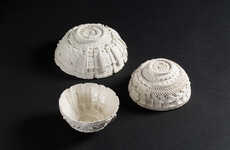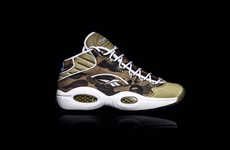This Student-Created Design Updates a 19th Century Lace Bodice
Laura McQuarrie — November 11, 2016 — Tech
References: 3ders.org
This 3D-printed bodice created by Israeli student designer Ganit Goldstein from the Bezalel Academy in Jerusalem puts a contemporary twist on an old lace bodice from a nineteenth century costume.
For a school project in her second year at Bezalel Academy of Arts and Design, Goldstein was tasked with taking inspiration from a historical outfit and presenting it in a modern way. As lace has always been seen as a revolutionary fabric, this served as the starting point for her design process.
Goldstein generated her own special algorithm to create the 3D lacework designs and entirely digital approach that means no hands were used directly to create the garment itself. This speaks to the potential that additive manufacturing in fashion specifically has the potential to radically change ethical clothing production.
For a school project in her second year at Bezalel Academy of Arts and Design, Goldstein was tasked with taking inspiration from a historical outfit and presenting it in a modern way. As lace has always been seen as a revolutionary fabric, this served as the starting point for her design process.
Goldstein generated her own special algorithm to create the 3D lacework designs and entirely digital approach that means no hands were used directly to create the garment itself. This speaks to the potential that additive manufacturing in fashion specifically has the potential to radically change ethical clothing production.
Trend Themes
1. 3d-printed Clothing - The creation of 3D-printed clothing offers a modern and digitally-enabled approach to traditional garment production methods.
2. Digital Design Algorithms - Designers can leverage custom digital design algorithms to create unique and complex 3D-printed textiles and fabrics.
3. Additive Manufacturing in Fashion - Additive manufacturing techniques have the potential to revolutionize ethical clothing production processes.
Industry Implications
1. Fashion Industry - 3D printing technology can be used to create unique garments and textiles, revolutionizing traditional manufacturing processes.
2. Product Design Industry - Incorporating digital design algorithms into product design and manufacturing could lead to new functional and aesthetic possibilities.
3. Sustainable Fashion Industry - Additive manufacturing techniques offer new opportunities for sustainable and ethical clothing production, minimizing waste and negative environmental impact.
4.4
Score
Popularity
Activity
Freshness






















